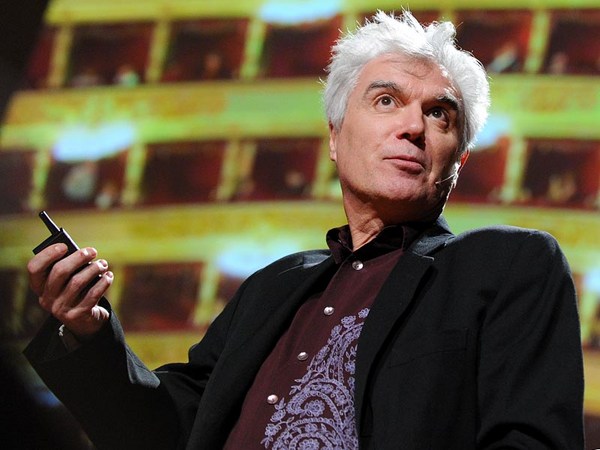Music isn't music until your brain makes it so. Sounds can be noise in one context and music in another. We can all tell when someone is speaking vs. when they're singing, but as Diana Deutsch discovered if you take a spoken sentence, pull out a phrase, repeat that phrase over and over and over again, it will begin to sound musical. Then, if you listen to the entire sentence again, it will sound as if the person bursts into song when he or she gets to the repeated part. But the sounds reaching your ear are the same in all of those cases; what's changed is your brain. How the brain turns sound into music remains one of the greatest mysteries of neuroscience. The vast majority of us love some kind of music; If you don't, you are very rare and scientists will want to study you. We call you a person with "amusia" - a cool new name. We don't all love the same music. Personally, I'm not a huge fan of smooth jazz, and you might not like opera. This characteristic of music, the fact that it's universally loved, but highly subjective, has ensured that it continues to baffle us. We all need certain things to survive and reproduce: food, water, sex. Our minds have evolved in such a way that when we don't have those things, we seek them out. They become enjoyable; we call them "biological reinforcers." But music is just a bunch of sounds strung together, it doesn't provide us with the essential nutrients; it doesn't bind to our neurons the way drugs do; it doesn't ensure that our genes live on although that might be debatable. Why do we love music? It's a question I've struggled to answer, and I can't promise you a full, complete solution today, but I like to share with you some of the scientific insights that had made me a better musician, and some of the artistic insights I hope will help neuroscientists solve this mystery. I come from a family of physicians: two anesthesiologists, a gastroenterologist, a generalist, an orthopedic surgeon, an ophthalmic surgeon, and an ER doctor. Thanksgiving dinner at our house is the safest place to be outside of the hospital. (Laughter) so I can't guarantee it's the most fun. Then there is my mother; she is a conductor, much to my two-year old son's dismay, not of the locomotive kind but very much of the music kind. Growing up, I saw how difficult it is to make a living as a musician in a society where music is universally loved but hopelessly undervalued. She works long hours, she still sacrifices every holiday, and there is a part of her that never stops wondering what people thought of her last performance. If you count up all the awards, the recognitions, and distinctions, she's by far, the most successful member of our family, but she certainly wouldn't think so. Not that being a doctor isn't stressful - it is - but at the end of the day, you've spent your time trying to extend or enhance a person's life, and who can argue the value of that? So when it was my turn to decide what to do with my professional life, the choice seemed pretty straight forward: go to medical school, and in your free time, continue up your musical training. But then I watched my brother trained to become an orthopedic surgeon, and I realized there is no such thing as free time in med school and especially in the years that follow. I didn't want to give up the most important years of my vocal training. I also couldn't see how I could support myself and pay for those expensive singing lessons if I didn't have some other way to make money. So I turned to neuroscience. To me, it was the a perfect blend of science and poetry. Like pretty much every other neuroscientist of my generation, I devoured the writings of Oliver Sacks; I studied topics like autobiographical memory, analogical reasoning, creativity. So you'd think then I'd turn to science to help me become a better musician. After all, if I was using science to understand something as elusive as insight, wouldn't it make sense to turn there to learn the things that I loved? But the truth is the more I looked at anatomical drawings of the larynx, the tongue, and the diaphragm, the less I felt I understood about my instrument; I couldn't see how knowing what parts of the brain were active or even enhanced in musicians would make me sing better. For a while, I even tried very hard to give up singing, because, after all, there are so many great singers in the world. We all need to get one-on-one care from a physician, but many hundreds of thousands of us can be moved by the same musician. So wouldn't I, and maybe the world, be better off if I stuck to medical research? The problem was that the more time I let elapse between singing engagements, the more I felt there was something really important missing from my life. The more I felt that I couldn't be the person I needed to be, I became moody, irritable, a little irrational, often mean; and I found too often I would cap off a difficult day in the lab with a martini or two and an hour of self-loathing. So when I finished my neuroscience PhD, I decided to dedicate myself full time to music; I enrolled in a Master's of Music program. Classical musical training follows the apprenticeship model where you study with one or two teachers for many years until you can produce the sounds that you hear in your imagination on your instrument. But the one thing that kept gnawing at me over and over again was how little neuroscience had trickled down into this model. After all, most of the techniques are built upon performing the same exercises over and over and over again, often, in the same way, everyday; until you build those skills. To demonstrate this, I want to introduce to you one of my favorite collaborators, Keisuke Nakagoshi. (Applause) Keisuke is going to give us an example of what a typical piano training exercise sounds like. (Piano music starts) (Piano music ends) Over and over and over again! But the truth is if you want to take what you're learning, what you're developing in that skill, and apply it to any piece of music, research in motor learning suggests that you should in fact interleave and space out your trials introducing some randomness - what we call "desirable difficulties." There is even a study of pianists demonstrating this effect, but so many teachers have never heard of such a thing. So then I began to wonder, "What would happen if I actually try it on myself?" as most scientists use themselves as guinea pigs, and I found that I started to improve much more rapidly. So I developed a course called Training the Musical Brain; how to use neuroscience to develop more effective practice strategies which I now teach at the Conservatory of Music here in San Francisco. I started to wonder, "Are there other ways that science can make me a better musician that I couldn't see ten years ago?" When I was a child, I remember one of my evaluations at the Royal Conservatory of Music; it'll always stick with me. I was a kid, I sang all my pieces well, I didn't make any mistakes, the judges said my tone was very good, I had good technique, but my performance was deemed "unmusical." I was devastated. How could these judges gauge my musicality? Couldn't they see that I feel and understand this music deeply? But the truth is feeling the music and producing music other people feel are two different skills. In the rehearsal room, I can cry as much as I need to when my character is dying, but when I get on stage, it's your time to cry not mine. So what could science tell me about that? That's when my two worlds collided; because after all, art and science are after the same thing: the goal is to understand the human experience. Science does it by extracting general principles about the world, and art uses individual experience to highlight what's universal. So here is what I learned in a nutshell: your brain is primed to search for meaning, for patterns, in a random, chaotic world. We look for these things everywhere, and we've evolved in such a way that it's enjoyable when we make a new connection, when we learn something new, when we understand something meaningful. We find pleasure in it. We see things that are meaningful to us even when they are not there. We see faces everywhere; they are important to us. We anthropomorphize or attribute human-like traits to our pets, or cars, or digital devices. When we hear repeated sounds, and we know what they mean, we call it music. Speech becomes song just by repetition. In fact, repetition is the one quality of music that seems to be common across all cultures and genres, even in the one genre in which it's explicitly avoided - we call this classical contemporary music composition." Elizabeth Margulis found if you artificially insert repetition into these pieces, people find them more enjoyable, more interesting, more likely to be rated as having been composed by a human being rather than a computer. Why? Because repetition signals intention, it frames the pattern, it shows you that there is something meaningful here to listen to. But that's not enough to explain a human obsession. After all, music can cause riots, topple governments, raise the hairs on the back of your neck. What can science tell us about that? It turns out that when your brain is enjoying a piece of music that might even give you the chills, it's awash with a neurotransmitter called dopamine. Dopamine, despite its widespread fame, has actually been undersold in many ways; people think of it as the "pleasure chemical," but that's not all it does. A better term for it is the "salience chemical," because it's awash in some parts of your brain when you're trying to hold important things in mind, when you're nauseated, when you want something, when there is a meaning to be found. The way that dopamine's awash in the brain while you're getting the chills from music is very specific to when and where it happens. There's a paper from Robert Zatorre's lab at McGill with Valorie Salimpoor, the first author that documents these changes and showed me, finally, what it means to be musical. Even as a master's student, I self-doubted my ability to sing musically; it was a bit like being cool: everyone seemed to know what it was and how to do it, but if you even asked the question, it showed that you weren't cool. I guess the fact I turned to science for help puts the nail in the coffin of my coolness. (Laughter) Even though in the practice room, I'd spend almost all my time perfecting my high notes, after all, that's what gets you hired. They come at the climax of the piece; they get the biggest reaction from the audience; and if you screw them up, they are the most memorable. But my singing teacher would say to me, "It's all the notes that are leading up to the high note that are more important than the high note, and that's what you should practice." I understood that from a technical perspective but not from a musical one until I read the Salimpoor paper. In the Salimpoor paper, they show that there are two regions of the brain that mediate getting the chills from music and they tracked dopamine in these regions. They are the caudate and the nucleus accumbens. You can think of the caudate as your parent: it tells you that your behavior has consequences, it tracks how the things that you see, hear, observe, and do have outcomes; it sets up the expectation of a reward of pleasure and ensures, in the future, you will behave in such a way that you will seek reward and avoid the things that led to punishment. The caudate is awash with dopamine when you are leading up to the special moment that will give you the chills. But when you get to the moment that give you the chills, there is a dopamine spike in your nucleus accumbens. Your nucleus accumbens is your BFF, it's your best friend for life, because more dopamine in the nucleus accumbens correlates with a bigger high. In the 1950s, Olds and Milner stuck electrodes into the nucleus accumbens of a bunch of rats. Then, they taught those rats to press the lever; and every time they pressed the lever, they'd get a little electric current that stimulates their nucleus accumbens. Those rats wanted nothing more than to press that lever. One rat pressed it 7,500 times in 12 hours, suggesting that it would starve rather than stop pressing. The nucleus accumbens likes, but the caudate wants. The intensity of the chills that you feel from music depends on how much dopamine there is in your nucleus accumbens, but the number of times you get the chills or, if you get them at all, depends on the amount of dopamine in your caudate. That's what I learned, that's what it means to be musical. You need to set up the musical intention for your audience so that they will pay attention, so that the caudate will know that there is a reward to be had, and we better pay attention. Then, as a musician, you use all kinds of tools, once you've set up the tension, to delay it, to delay the release. There's all kinds of music tools you can use to increase the desire, the expectation, the motivation for the reward, because, after all, pleasure is the death of desire. But the more desire there is, the better the pleasure. That's what I learned. So let me demonstrate to you this little theory in practice. One of my favorite opera is "La Traviata" by Verdi. It tells the story of a Parisian courtesan, a high class prostitute, who is dying of tuberculosis, as lots of sopranos do. (Laughter) She is entertaining a lavish party because she's giving everybody pleasure. That's what she does for a living, she gives pleasure, and she gets exhausted by the party; but at the party, she meets this young man who has been sitting outside her window while she was ill, unable to give pleasure when all her friends had abandoned her, and he was waiting for her because he really loved her. And now, alone in her room, she wonders, "What would it be like to feel true love?" "What is this mysterious thing, this pulse of the universe?" She realizes that it's a double-edged sword, that love is both torture and delight, (Italian) "croce e delizia." That's the intention I want to communicate to you, musically, because, of course, the idea is much more complicated than we can say. In order to do that, I'll first sing a repeat of what the tenor's saying earlier in the act. Clever Verdi! We like things better the second time around; repetition. Then I will set up the expectation, I'll tell you straight off, there will be a high note - Setting that up? - but I will delay that high note as long as possible to increase your motivation to get dopamine into your caudates, so that by the time we relax that tension, there is a dopamine spike in your nucleus accumbens. (Laughter) (Piano music starts) (Singing) (Singing and piano music end) (Applause)
Related talks
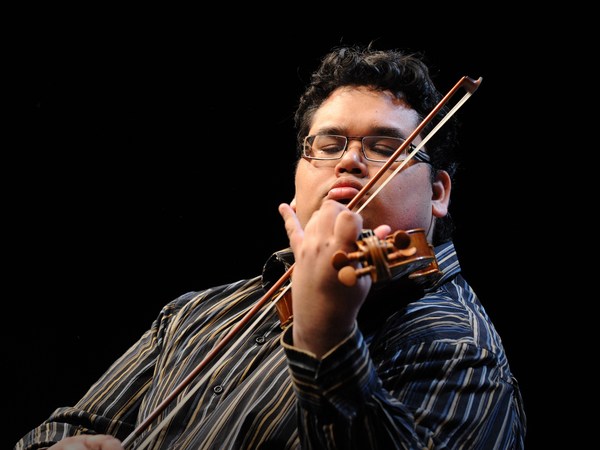
Robert Gupta: Music is medicine, music is sanity

Ji-Hae Park: The violin, and my dark night of the soul
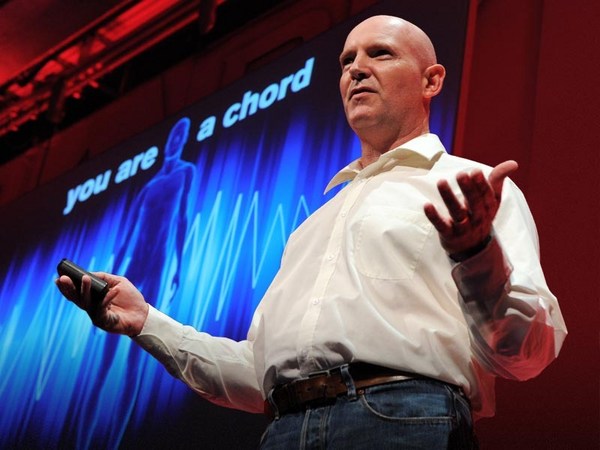
Julian Treasure: Shh! Sound health in 8 steps
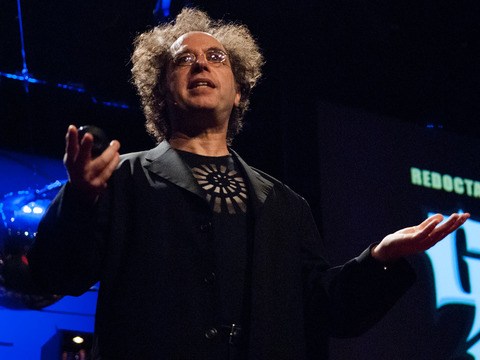
Tod Machover + Dan Ellsey: Inventing instruments that unlock new music
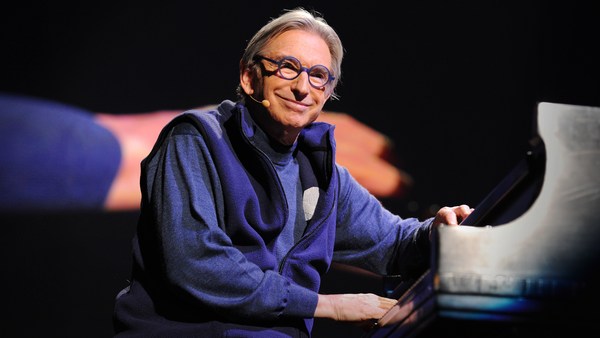
Michael Tilson Thomas: Music and emotion through time
